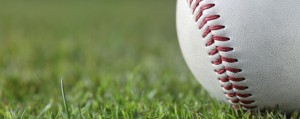 HYANNIS – For batters, it’s three strikes and you’re out. For pitchers, it’s too many throws and you might be out – out of the game with an injury.
HYANNIS – For batters, it’s three strikes and you’re out. For pitchers, it’s too many throws and you might be out – out of the game with an injury.
As the 2015 World Series gets underway this week, the spotlight is on top performing players who are at the top of their game. But, young boys who dream of becoming Major League pitchers need to protect their throwing arm carefully, according to a new study in Arthroscopy. The study adds to the evidence that pitching puts a lot of strain on young baseball players’ arms.
The results of the study were no surprise to Joseph Chase, MD, an orthopedic surgeon at Falmouth Hospital.
“If you look at shoulder and elbow injuries in youth pitchers, about 5 percent of pitchers suffer an injury within 10 years that requires them to have surgery or stop pitching,” said Dr. Chase, a former team physician with the Boston Red Sox.
The study in Arthroscopy, “Pre- and Postseason Dynamic Ultrasound Evaluation of the Pitching Elbow,” was conducted by orthopedic surgeons and other researchers affiliated with the Henry Ford Health System in Detroit. Ultrasound evaluations were conducted on 22 high-school pitchers (average age 16.9 years). The tests were done before the season, when the pitchers had rested their arms for at least two months, and within one week of the last game of their season.
The study concluded that “the stresses placed on the elbow during only one season of pitching create adaptive changes to multiple structures about the elbow.” Among the signs of stress were significant increases in ulnar collateral ligament (UCL) thickness. While minor UCL injuries can be treated with rest and ice, major UCL injuries can require the reconstructive repair known as Tommy John surgery.
“Young pitchers need more oversight,” said Dr. Chase. “The biggest thing is to monitor pitch counts. That’s now being addressed at the Little League level.”
The American Sports Medicine Institute posted recommendations that include limits of 100 innings pitched per year and a break of at least two or three months per year from overhead throwing.
Little League regulations call for a maximum of 50 pitches per game for 7- and 8-year-olds up to 105 pitches per game for 17- and 180year-olds.
Dr. Chase pointed out that parents may need to monitor young pitchers’ throwing since some youngsters play for local teams and travel teams.
“It’s harder to track the total number of pitches when they’re on multiple teams,” said Dr. Chase. “A lot of players are on Little League and travel teams, so they can be pitching six months or more a year. In higher-level youth leagues and high school, strong throwers often can be used as catchers as well as pitchers and that adds to stress.”
Dr. Chase mentioned a study by Dr. James Andrews, a cofounder of theAmerican Sports Medicine Institute and a surgeon who has operated on many major league players. The study showed that players in southern states, who have longer seasons, showed increased incidence of arm injuries.
In an interview last year with Fox Sports, Dr. Andrews offered advice to parents and coaches.
“The main thing parents need to know is let the kids be kids. Let them play multiple sports,” he said.
“The big problem we’re seeing with today’s youth sports is two words – specialization and professionalism. Specialization means playing one sport year-round and never having time for recovery. The body needs three to four months off each year from a specific sport to recover. Pro athletes do that, but not our kids. They need at least three months where they’re not throwing a baseball or kicking a soccer ball or whatever.
“Professionalism means these young kids are being trained like pro athletes, and their bodies are too vulnerable to take that kind of heavy-handed training. Parents think they are doing the best they can to get their kids a scholarship or whatever, but what they’re really doing is burning them out and causing injuries.”
Dr. Chase said that as soon as a pitcher complains, his arm should be checked.
“If they complain about a dead arm, an orthopedist should take X-rays and look at the soft tissues,” he said. “The majority of the time it can be addressed with physical therapy and they can get back to playing fairly quickly.”

























Speak Your Mind